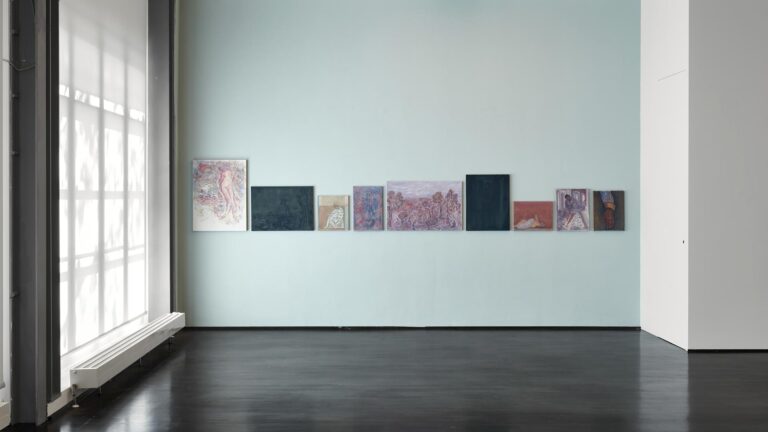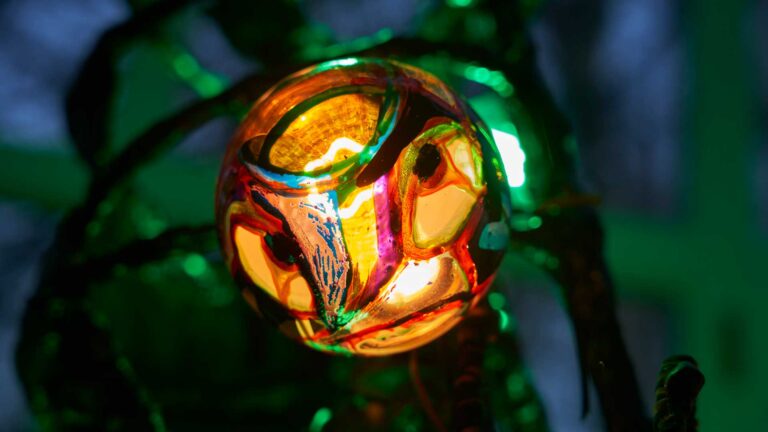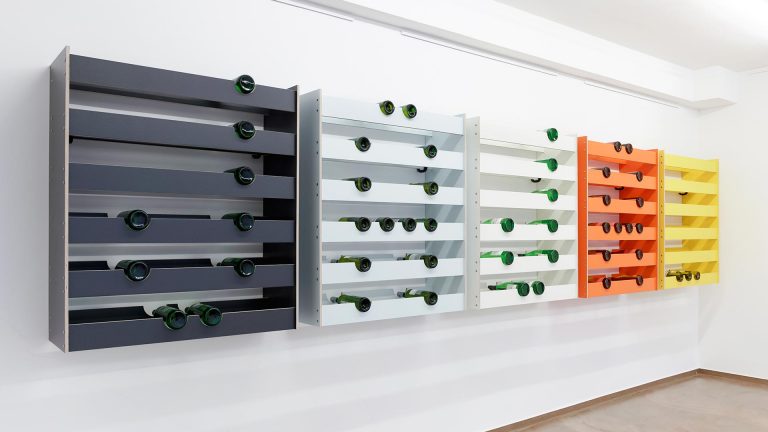The exhibition Key Operators. Weaving and coding as languages of feminist historiography and its accompanying program of events focus on the links between feminized labor, technological advancements, and their associated languages. The systems inscribed in weaving and coding serve as a point of departure for devising alternative ways of looking at gender and work. The exhibition brings together an intergenerational group of artists—encompassing both historical and newly conceived works—that engage with the concept of weaving and its significance for technological developments, both historically and metaphorically.
The technological histories of computing and textile weaving have been connected since the industrial revolutions of the late eighteenth and early nineteenth century. The pioneering mathematician Ada Lovelace occupies a special place within this interwoven history as one of the early figures to recognize the computational potential of the punch card system used in automated Jacquard looms, which was a physical medium of binary code: a hole was 1, a blank was 0. Nevertheless, the significant role that women and their work played in the development of computer technology often remains forgotten or sidelined. In this context, we must ask why weaving is still perceived as a “feminine” activity and coding as something “masculine”? As Sadie Plant observed in her landmark study Zeros + Ones (1997): “With ‘all the main avenues of life marked ‘male,’ and the female left to be female, and nothing else,’ men were the ones who could do anything. Women … have functioned as ‘an ‘infrastructure,’ unrecognized as such by our society and our culture.’”1
Following this thought, the project’s title is derived from a gendered division of labor: when photocopiers were first introduced in North American offices in the late 1940s, only trained “key operators” were allowed to use them. Tasks associated with the machine were considered menial office work and thus typically assigned to women. The title also offers other possible readings: “key” as a central figure, emphasizing the role of women in both the establishment of weaving as an independent art form and in the development of computer technology; “key” as a computer key or a loom pedal. And ultimately, the featured contributors are (personal) key figures who have engaged with these subjects in ways that make them trailblazers of feminist thought and practices.
The group exhibition is preceded and accompanied by a program of events that further explores the project’s central questions. A summer screening of Lynn Hershman Leeson’s Conceiving Ada (1997) served as a prologue, highlighting the life and legacy of Ada Lovelace from a cyber-feminist perspective. Claire L. Evans will give a talk on the women pioneers of the computer age, retelling the story of the digital revolution from the perspective of these often-overlooked protagonists. The program also features a lecture by Sadie Plant, who, departing from Zeros + Ones (1997), will reflect on women’s structural importance in the “reproduction of the social order,” yet they are being reduced to an object of transaction between men, “never tak[ing] part as subjects.”2 The program concludes with a dialogical tour of the exhibition with Johannes Porsch, focusing on the display and forms of spatio-social organization.
The artistic and theoretical positions in Key Operators employ weaving and coding as critical metaphors. The featured contributions act as narrative threads, traversing various contexts and intertwining diverse methods of storytelling in order to scout the peripheries of official historiography for its absences. In this sense, the loom and the computer are conceived as allies in the examination of history’s sidelines, which so often provide the conditions for its writing.
[1] Sadie Plant, Zeros + Ones: Digital Women + the New Technoculture (London: Fourth Estate, 1997), p. 36, quoting Luce Iri-garay, This Sex Which Is Not One (New York: Cornell University Press, 1993), p. 84.
[2] Plant 1997, pp. 34, 36.
The project is supported by the German Federal Cultural Foundation and the Federal Government Commissioner for Culture and Media













































